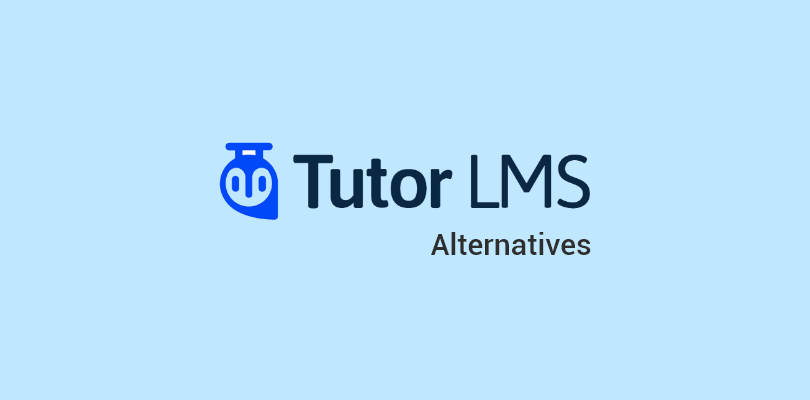“Online learning is not the next big thing; it is the now big thing.” – Donna J. Abernathy.
This quote perfectly sets the stage for a common misconception I often encounter in my professional journey in the training industry. You, too, might have noticed a pivotal point of confusion among professionals and clients alike: the distinction between eLearning platforms and Learning Management Systems (LMS).
While an LMS and eLearning tool may seem similar, significant differences exist between these systems. In this blog, I aim to highlight the topic of eLearning platforms vs LMS to clarify how they differ and help you make informed decisions for your learning needs.
But before discussing the differences, let’s check what each term refers to.
What Is an eLearning Platform?
An eLearning platform is a digital environment that helps deliver educational content and facilitate learning online. They serve as the backbone for various learning experiences and cater to a wide audience, from students in academic settings to professionals seeking to enhance their skills in the corporate world.
These platforms offer a range of features that support both synchronous (real-time) and asynchronous (self-paced) learning. Key components often include access to a vast library of courses covering numerous subjects, interactive tools such as quizzes and forums, and resources like videos, articles, and downloadable content.
eLearning systems are particularly beneficial for organizations looking to train employees, update their skills, or promote continuous professional development in a scalable and efficient manner.
What Is an LMS?
An LMS or learning management system is a software application or web-based technology that you can use to plan, implement, and assess a specific learning process. It plays a crucial role in the corporate domain, aiding training managers, HR departments, and executives in streamlining their organizations’ training and development processes.
An LMS enables the creation, distribution, management, and tracking of educational content and training programs.
The primary functions of an LMS include hosting and delivering learning content, registering users, tracking learner progress, and generating reports and analytics. It supports online and blended learning environments, allowing instructors to manage courses, assignments, and assessments efficiently.
LMSs are invaluable in the corporate setting for onboarding new employees, conducting compliance training, developing skills, and facilitating professional certification. They ensure consistent training for employees, regardless of their location, and allow for monitoring of individual and group performance over time.
eLearning vs LMS: A Comparison
To compare an eLearning tool with LMS, I identified the core features and purposes of both. I looked into how each serves its audience, the functionalities, and the value they offer to learners and organizations.
I gathered insights from user reviews, expert opinions, and my experience in the training industry. This groundwork helped me outline the key differences and functionalities and ensure a comprehensive and fair comparison.
| Feature | eLearning Platforms | LMS |
|---|---|---|
| Primary Focus | Content delivery and engagement | Administration, documentation, tracking, and reporting of training programs |
| Target Audience | Learners seeking self-paced courses | Organizations looking to manage and deliver employee training programs |
| Content Creation | Often includes tools for content creation and curation | Primarily focuses on managing and delivering content created elsewhere |
| Interactivity | High (with multimedia content, quizzes, and interactive elements) | Varies (mostly depends on the content uploaded to the system) |
| Integration | Limited integration with external tools and systems | Extensive integration capabilities with HR systems, email marketing tools, and CRMs |
| Customization | Limited to course content and structure | Extensive customization options for branding, privacy & security, learner paths, and reporting |
Now, let me explain the eLearning platform vs LMS differences in detail for better understanding.
1. Primary Focus
eLearning platforms are like online classrooms, where you can access educational content anytime. They offer interactive courses that make learning fun and engaging. Whether you want to learn a new language, hobby, or profession, eLearning platforms have something for you.
On the other hand, a Learning Management System platform is like the brains behind organizational training. They have everything you need to plan, manage, track, and report on your training activities. LMS tools are essential for organizations that want to train their employees, customers, or partners systematically and efficiently. They also help you comply with the rules and regulations of your industry.
2. Target Audience
“In order to create an engaging learning experience, the role of instructor is optional, but the role of learner is essential.” – Bernard Bull.
That’s exactly why you must know your learners. This will help you know how both platforms are different.
eLearning platforms are for people who love learning new things, whether for their careers, studies, or hobbies. They can choose from various topics and learn at their own pace, whenever and wherever they want. These platforms are perfect for curious, independent, and flexible learners.
On the other hand, an LMS platform is for organizations, schools, and companies that need to train their staff, students, or customers. They can create and manage courses, certificates, and assessments that suit their goals and standards. Plus, they can keep track of the progress and performance of different groups or individuals.
These systems are great for organized, efficient, and professional trainers. They are ideal for managing employee training, compliance certification, and educational courses, providing administrators with the tools to organize, assign, and track learning activities across different departments or groups.
3. Content Creation
eLearning systems feature built-in tools for content creation and curation, allowing educators and experts to design engaging and interactive courses. These tools enable the incorporation of multimedia elements, quizzes, and interactive activities directly within the platform, facilitating a dynamic learning environment.
LMS for eLearning, however, primarily focuses on managing and delivering pre-existing content. While some LMSs offer content creation tools, their strength lies in their ability to organize and distribute courses and materials created using external tools. This makes LMS highly effective for organizations with a library of training content or various content sources.
That said, an AI-powered LMS adds a new layer of efficiency, automating course generation based on simple inputs and making content development faster and more accessible.
4. Interactivity
At the heart of eLearning platforms lies the concept of interactivity, which is about making the learning experience as engaging and immersive as possible. These platforms use multimedia content, like videos and animations, interactive quizzes, simulations, and discussion forums. The goal here is to encourage learners to actively participate in their learning journey rather than just passively reading or watching.
Now, the situation gets a bit more nuanced when we talk about an LMS platform. The level of interactivity you’ll find in an LMS can vary. This variation is mainly because an LMS acts like a container for the course content. So, the interactivity largely depends on the nature of the content that educators or trainers upload to the LMS.
Some LMSs are built with tools and features that support high levels of interactivity, but the key factor is actually the instructional design of the course materials. If the course designers incorporate interactive elements into their materials, then the LMS can deliver a highly engaging learning experience.
5. Integration
eLearning platforms typically offer limited integration with external tools and systems. They focus on providing a standalone learning experience that encompasses content delivery, assessment, and certification within a single environment.
An LMS, on the other hand, boasts extensive integration capabilities, allowing them to connect with a wide range of HRMS, collaboration, and communication tools. This integration is crucial for organizations that need to align training programs with their broader HR and operational systems, facilitating seamless data flow and reporting.
6. Customization
LMS and eLearning tools differ significantly in their customization capabilities. eLearning platforms typically allow you to customize course content and structure. This means you can tailor learning paths and incorporate your brand into the course design, focusing on ease of use and accessibility to suit a wide audience. However, the customization options are somewhat limited to these aspects.
On the other hand, an LMS takes customization to another level. They offer the ability to customize content and learning paths and also enable you to personalize branding, user interfaces, and even reporting features. This extensive customization is crucial for organizations aligning the LMS with their specific corporate identity, training goals, and detailed reporting needs. It ensures a consistent and branded learning experience throughout the organization, providing flexibility that eLearning platforms typically do not offer.
Are All eLearning Platforms an LMS?
No. Not all eLearning platforms are LMS because they may not have other features that an LMS has, such as managing, assessing, and reporting on learners’ progress and performance.
However, all LMSs are eLearning platforms because they can create and deliver online courses and learning materials.
For instance, ProProfs Training Maker, Canvas, and Blackboard are some popular LMS that offer a range of features for online learning management. On the other hand, Udemy, Coursera, and Khan Academy are some examples of eLearning platforms that are not LMS because they mainly focus on delivering online courses and content but do not have the same level of learner management and assessment capabilities.
An analogy would be all cars are vehicles, but not all vehicles are cars. A car is a type of vehicle that can transport people and goods on roads. But a vehicle can also be a bike, a boat, a plane, or a spaceship, which are not cars.
Does this make sense?
Case Study:
Get Free LMS Software — All Features, Forever.
We've helped 567 companies train 200,000+ employees. Create courses in under a minute with our AI LMS or use 200+ ready-made courses on compliance, harassment, DEI, onboarding, and more!
What Should You Choose – an eLearning Tool or an LMS?
The choice between an LMS and an eLearning platform depends on your specific needs.
Choose an LMS if you need to manage, track, and assess learners’ progress, especially in formal education or corporate training settings. It’s ideal for organizations looking to deliver courses and monitor employee or student performance systematically.
Opt for an eLearning platform if your primary goal is limited to providing educational content or courses without the necessity for detailed tracking or administrative management. It suits individuals or organizations focusing on content delivery and accessibility over comprehensive management and reporting.
 Tips
Tips
We’d love to hear your tips & suggestions on this article!
Get Free LMS Software — All Features, Forever.
We've helped 567 companies train 200,000+ employees. Create courses in under a minute with our AI LMS or use 200+ ready-made courses on compliance, harassment, DEI, onboarding, and more!

 We'd love your feedback!
We'd love your feedback! Thanks for your feedback!
Thanks for your feedback!



![12 Best Enterprise Learning Management Systems in 2025 [Free & Paid Platforms]](https://www.proprofstraining.com/blog/wp-content/uploads/2024/08/Feature_TM_Enterprise-Learning-Management-Systems_-Features-Benefits-and-Best-Tools.png)



